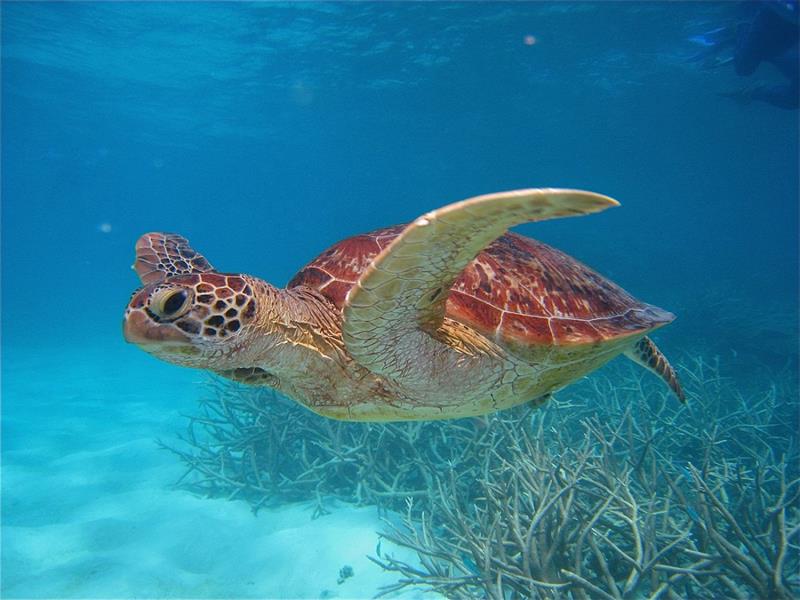
$300,000 for turtle nest cooling trial at Mon Repos
by Great Barrier Reef Marine Park Authority 21 Dec 2020 06:33 UTC

Six of the world's seven species of marine turtle live within the Great Barrier Reef World Heritage Area © Great Barrier Reef Marine Park Authority
Minister for the Environment, Sussan Ley today announced that $300,000 will be invested in beach shading and cooling trials at the world-renowned Mon Repos turtle rookery near Bundaberg, home to the largest concentration of nesting marine turtles on the eastern Australian mainland.
Mon Repos is the site of one of Australia's longest running turtle research and monitoring programs and the funding is part of the Morrison Government's $6 million Reef 2050 and Natural Heritage Trust funded Great Barrier Reef Green Turtle Research program aimed at improving our understanding of the habitat needs of turtles, while also supporting the work of Traditional Owners and Land and Sea Rangers to co-manage turtle populations that forage and nest in their sea country.
The $300,000 will support innovative trials to cool turtle nests at the site.
The next phase of these trials, which gets under way during next year's turtle nesting (October to March), builds on work by the Queensland Government aimed at determining whether cooling parts of the nesting beach can address the increased proportion of female hatchlings caused by higher nest temperatures.
The Great Barrier Reef Marine Park Authority will work with the Queensland Parks and Wildlife Service through the Reef Joint Field Management Program to monitor the success of the nest cooling trials which aims to produce a more balanced mix of both male and female hatchlings.
Minster Ley said the monitoring work would determine whether the cooling technique could be expanded to other turtle nesting sites elsewhere on the Great Barrier Reef.
"We know that the sex of a sea turtle is determined by the temperature at which the egg is incubated and that we are seeing higher temperatures produce more females," Minister Ley said.
"This is about working with scientists to look at the ways we can help the ecosystem adapt and become more resilient in the face of higher temperatures and changing climate.
"It is part of a wider approach to resilience and adaptation investments being led by the Morrison Government from IVF style coral spawning, to coral restoration, improved water quality, land management and crown-of-thorns starfish control.
"Mon Repos is perfectly placed for the trial - it supports the most significant loggerhead turtle nesting population in the South Pacific region and nesting turtles have been monitored here since 1968."
The long-term focus at Mon Repos means most nesting females have been tagged previously and the trials can be controlled to a high degree. Undertaking these trials under controlled conditions at Mon Repos creates a platform that may allow them to be expanded and implemented across remote area nesting sites.
The Australian Government's $6 million Great Barrier Reef Green Turtle Research program involves researchers and Indigenous rangers joining forces to better understand the turtle population and its important nesting rookeries and foraging habitats.